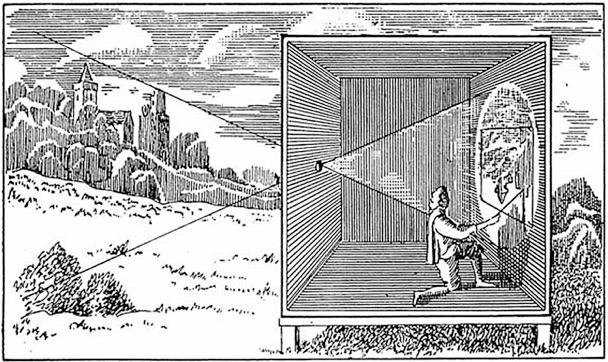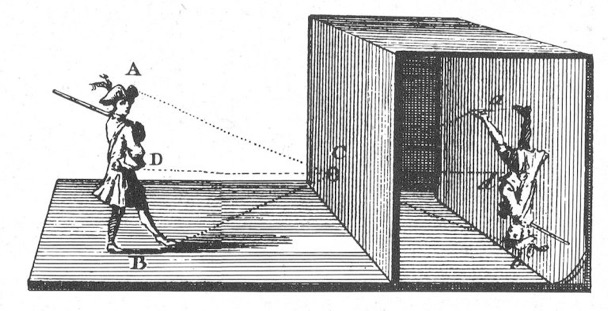Camera Obscura

The “camera obscura” was originally a lightless room with a small hole in one of its walls. During the day, light entering the room would project an inverted image of what is outside.
The first mention of a camera obscura was 7000 years ago by Mozi, a Chinese philosopher. In 13th century it was used by scientists for the observation of sun eclipses. The Greeks knew about the camera obscura 6000 years ago, and it was known to the Romans.
Leonardo da Vinci developed a portable camera obscura box and used it for making exact drawings and sketches. In my opinion, this was the beginning of the modern camera.
Giambattista della Porta improved da Vinci’s camera obscura box by adding an optical lens. Before this, air molecules acted as a lens. He also used the camera obscura to study and understand the mechanics of the human eye.
In 1604, Johannes Kepler was the first to use the term “camera obscura”.
The camera obscura became popular in the 1700s and used by artists as shown in the top illustration.
A simple trick for creating the camera obscura effect is to be in a darkened room at night. Using a lens that is opened to its maximum aperture, and aiming the lens out a window; an inverted image of what is outside will be projected behind the lens onto a wall.
Another trick would be to black out all the windows and light sources of a room, using thick black plastic, garbage bags, or black paper. Make a small 1/4 inch/8~10mm hole in the blackout material. On a bright day, an image of what is outside should appear on the wall opposite the the hole.


copyright Stephen Eisenberg
